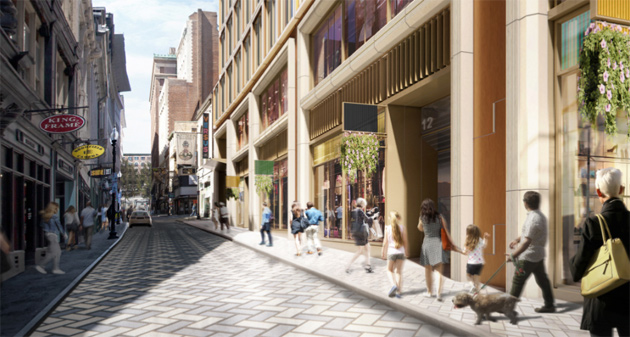I'm not sure where some of you are getting your information regarding the sales of many of these places.
In my case, the Suffolk County Registry of Deeds.
I'm not sure where some of you are getting your information regarding the sales of many of these places.


Developer says it actually hopes to begin construction of Bromfield Street tower next year; linkage fees will help pay for affordable housing on Lagrange Street
The New York company that owns the former Payless building at Bromfield and Washington streets in Downtown Crossing now says, in a filing with the BPDA last week, it expects to begin 28 months of construction on a new 22-story office tower there in the second half of 2022. Read more.www.universalhub.com
I'm not sure where some of you are getting your information regarding the sales of many of these places. One of my best friend's wife is in top-tier sales and has numerous clients who have put money down on places in St Regis, Dalton, MP, Sudbury and most others and she says that, though they are going for a little less than expected, they are filling up. She has many clients coming from SF area, Seattle, China, India, parts of Europe, all that work for big tech and biotech companies that have money to burn. Many of their offices/labs aren't even built yet so they're looking to purchase now before the plethora of new buildings open and the massive influx of new area residents that are expected arrive. This is happening and we're going to see unprecedented (in our lifetimes) population growth over the next 5 years. That's a fact.
Maybe, but even that might surprise us. Speaking for myself, when I was in the office every day, I brought my lunch, but now that I am in just once or twice a week, I always buy my lunch. If enough people switch their behavior in similar ways, it might be enough to support lunchtime retail activities. And if there is enough housing built around concentrations of office buildings, then the work from home crowd can also support the retail operations. Add to that the increasing relevance of lab space, where workers have to be on site, and things might end up not so different for the salad and sub joints.I guess in that scenario it crushes financial district retail if no one is around to like buy a salad and run an errand at cvs at lunch.
Maybe, but even that might surprise us. Speaking for myself, when I was in the office every day, I brought my lunch, but now that I am in just once or twice a week, I always buy my lunch. If enough people switch their behavior in similar ways, it might be enough to support lunchtime retail activities. And if there is enough housing built around concentrations of office buildings, then the work from home crowd can also support the retail operations. Add to that the increasing relevance of lab space, where workers have to be on site, and things might end up not so different for the salad and sub joints.
Instead, she is seeing a “flight to experience,” with demand highest for top-quality buildings close to amenities and infrastructure. Or as Henderson puts it: “People don’t want to go somewhere without nice lunch options.”
I'm somewhat surprised no one has mentioned subleasing activity as a prime indicator here... it skyrocketed to unprecedented levels at the start of the pandemic, right? But my understanding is, it's already more-or-less back to "normal," pre-pandemic baseline levels.
IF it had stayed up at an unusually elevated range, I think that would've been a serious indicator of a rather profound and radical shift... but the fact it has subsided so rapidly back to pre-pandemic levels (again, per my understanding) seems very telling to me.
Unless people think I'm vastly overrating subleasing activity as a key market indicator? Rebuttals are welcome!
This project is not finaneable without 50 % equity. Unlikely to happen. Similar to raffles hotel/condo in back bay. 40 % equity plus guarantees
Was it painful to have to recalibrate from "this project is dead" to "unlikely to happen" in barely over a month? Can you spare us the suspense and advise in advance the verbiage you will deploy to continue to soften your pessimistic assertions if/when this gets approved by the BPDA . . . and goes out for permitting/mobilization . . . and a ground-breaking occurs? Curious...
It does . . . but the colossal order windows motif is beaten to death in this city. Slides 18-19 underscore this. And there will never be trees seen from the Common per slide 41. That setup barely works in Singapore. In Boston's climate? Nope.This has a beautiful facade.


Building an office tower in downtown Boston right now? Maybe not as crazy as it sounds. - The Boston Globe
A New York-based developer is pushing ahead with a $350 million, 22-story office tower in Downtown Crossing, albeit one that will differ from typical high-rises in a few key ways.www.bostonglobe.com
